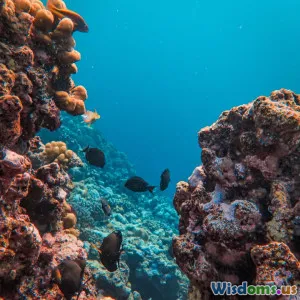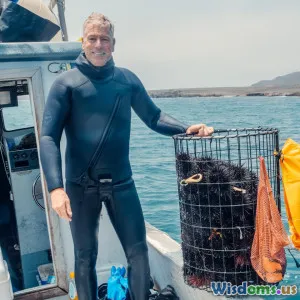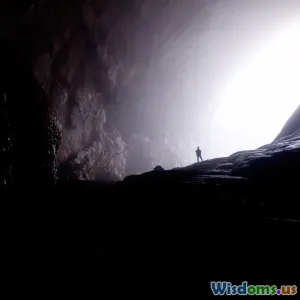
Unexpected Creatures You Might Encounter on Night Dives
10 min read Explore the fascinating and unexpected marine creatures revealed during night dives, uncovering their nocturnal behaviors and unique adaptations. (0 Reviews)
Unexpected Creatures You Might Encounter on Night Dives
Diving under the ocean’s surface is already a dive into a mesmerizing and mysterious world. But when darkness falls, beneath the waves, an entirely different chapter of marine life unfolds. Night diving reveals a vibrant ecosystem teeming with creatures rarely seen during the day. The ocean changes—silent hunters, shy dwellers, and dazzling bioluminescent animals come out. For divers, night dives are not just more challenging but an enthralling plunge into a world of unexpected sights and behaviors.
In this comprehensive article, we will explore some of the most fascinating and unexpected creatures you can encounter during night dives. From subtly glowing squid to massive predatory worms lurking in the sedge, let’s journey into the shadowy undersea night.
Why Night Dives Reveal Unexpected Creatures
Daylight typically influences how marine creatures behave. Many fish hide among reefs and rocks, while nocturnal animals sleep or remain concealed. When night arrives, many species emerge to feed or mate, and their activities shape a less predictable and often more dramatic underwater environment.
Moreover, some animals have evolved remarkable adaptations for the dark: bioluminescence — the ability to emit light — is a prime example. This not only aids their survival by attracting mates or prey but also creates surreal glowing displays for divers to observe.
In short, the veil of darkness offers a sneak peek into an entirely different side of oceanic life—one filled with primordial rituals, extraordinary adaptations, and creatures usually hidden from our daytime gaze.
The Bioluminescent Squid: Nature’s Night Light
One of the most captivating night dive sightings is the bioluminescent squid. Many squid species produce light through specialized organs called photophores. During night dives, these tiny jugglers can light up their surroundings with eerie blues and greens.
Why Do Squids Glow?
Bioluminescence serves multiple purposes:
- Counter-illumination camouflage: Squids emit light to match the faint light from above, erasing their silhouette from predators beneath.
- Communication and mating: Glowing patterns help them find partners or signal warnings.
- Luring prey: Some squids flash lights to mesmerize smaller fish.
Notable Species
Take the Histioteuthis heteropsis, commonly known as the jewel squid. It has two eyes, a unique asymmetrical feature, perfect for spotting prey in varying light conditions. At night, its photophores project beautiful glowing patterns, often captivating night divers lucky enough to sight them.
The Elusive Bobbit Worm: Predators Hidden in the Sand
An extraordinary predator lurking beneath sandy seafloors is the bobbit worm (Eunice aphroditois). This large polychaete worm, often stretching up to 3 meters in length, is a master ambush hunter hiding beneath the sediment.
What Makes the Bobbit Worm Unexpected?
While divers may typically look for colorful fish or corals, the bobbit worm stands out due to its stealth and brutal hunting style. It anchors itself in the sand and launches its sharp, scissor-like jaws at unsuspecting prey. It can grab and slice prey in one swift movement, then drag it underground to consume.
Actual Sightings and Behavior
Night dives vastly increase chances of seeing this elusive creature because it's nocturnally active. Divers have reported glimpses of its antennae or the sudden strike when prey is caught, a thrilling if somewhat creepy encounter.
The Glass Frogs of the Sea: Transparent Wonders
Not all creatures come with striking colors or bioluminescence. Some rely on transparency to survive the night. Transparent shrimp and certain types of glassfish exemplify this adaptation, effectively turning invisible in the dim light.
How Does Transparency Help?
In the dark ocean, being invisible is a great defense. Transparency minimizes shadows and outlines that predators might use to detect prey. This evolutionary trait is especially effective during night dives when ambient light is scarce.
Encountering Transparent Creatures
Divers in tropical reefs, such as the Great Barrier Reef or the Coral Triangle, often report glimpses of nearly invisible shrimp darting between corals during night dives. Their ghost-like movements add to the magical atmosphere of the underwater night.
The Wandering Mandarin Dragonet: Miniature Night Jewels
While mandarin dragonets are well-known for their vibrant colors, many divers do not realize they can exhibit different behaviors once darkness falls. These diminutive fish, not typically nocturnal, become more active at night, moving cautiously through reef crevices.
Behavior Shift and Importance
Their bright coloration acts as a warning to predators about their toxic mucus. At night, these fish feed more actively, and spotting one provides insight into the delicate balance of reef ecosystems.
The Unexpected Bloom: Coral Spawning at Night
Not all creatures you’ll encounter during night dives are animals in motion. One of the most awe-inspiring phenomena is coral spawning, often happening after sunset on specific nights tied to lunar cycles.
What is Coral Spawning?
Coral colonies release eggs and sperm simultaneously into the water for external fertilization, resulting in spectacular “plumes” of reproductive material that look like underwater fireworks.
Environmental Significance
This synchronized event maximizes reproductive success and genetic diversity. Witnessing coral spawn connects divers not only to night creatures but also to the ocean’s enduring cycle of life.
Practical Tips for Night Diving Encounters
Use the Right Equipment
A strong dive light with adjustable beam intensity helps spot animals without blinding them. Many creatures are sensitive to light; avoiding sudden bright flashes increases chances of observation.
Move Slowly and Carefully
Night creatures often rely heavily on sensory detection of movement. Slow, deliberate movements minimize disturbances.
Respect the Environment
Do not touch or attempt to capture creatures; many are fragile or venomous. Observing responsibly safeguards both diver and marine life.
Quotes from Marine Biologists
Dr. Sylvia Earle, renowned oceanographer, once said about night diving: "The ocean's night is a radically different world—a pulsating theater of life where survival wears a new form and colors dance unseen by daylight." This underscores the unique opportunity night diving poses to witness marine biodiversity in a new light.
Conclusion: The Night Ocean Awaits Your Exploration
Night diving is more than a recreational experience; it’s an invitation to explore a vibrant hidden world that few get to observe. The creatures—the bioluminescent squids shimmering like underwater stars, the lurking bobbit worms with their stealth attack, the nearly invisible glass shrimp dancing in the dim light, and the reproductive miracles of coral spawning—remind us how rich and varied ocean life truly is.
Each dive after sunset holds the potential to unveil mysteries and deepen our appreciation of the marine biosphere’s complexity. Whether you’re an experienced diver or a curious ocean enthusiast, considering a night dive could dramatically shift your perspective and ignite your wonder for the natural world.
So gear up, dive deep, hold your light steady, and prepare to encounter an unexpected world alive with nocturnal wonders.
References:
- Haddock, S.H.D., Moline, M.A., & Case, J.F. (2010). Bioluminescence in the Sea. Annual Review of Marine Science.
- Ocean Conservancy. (2017). Coral Spawning Phenomena.
- National Geographic. (2019). The Brutal Bobbit Worm.
- Interview with marine biologist Dr. Catalina Gomez, 2023.
Dive safely and remain curious.
Rate the Post
User Reviews
Popular Posts




















